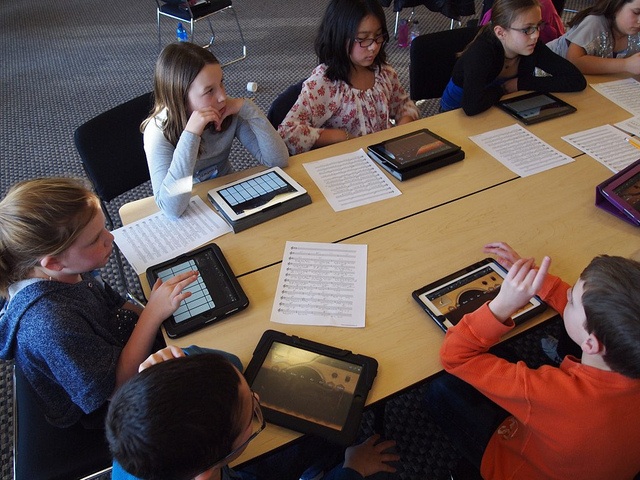Amid the problems encountered with physical textbooks and constant technological innovation, publishers, educators and even policymakers are advocating the digitisation of textbooks – with good reason. Here are the reasons why digital textbooks will transform your child’s learning.

1. Portability
Having textbooks in digital ebook format solves the problem of portability of heavy, traditional tomes. They can reside on the cloud – on Internet storage instead of a single computer – and opened in more than one device. They are also cheaper and more environmentally friendly compared to paper textbooks. In January 2012, Apple announced a partnership with publishers such as McGraw Hill, Pearson, and Houghton Miffin Harcourt to provide textbooks in its iBooks store. Barnes & Noble produced its own device and educational application for students: the Nook Study.
In an interview with the Associated Press in February 2012, U.S. Education Secretary Arne Duncan and FCC chairman Julius Genachowski stated that the Obama administration had set a goal for getting digital textbooks in the hands of all students, and that goal was a very ambitious five years. Singapore publisher Marshall Cavendish has also introduced electronic textbooks for schools.
2. Interactive Content and Resources
In digital form, textbooks are not just “books”. More engaging and interactive materials are available: interactive maps for geography, customizable graphs for math, video clips on the life cycle of a frog for science. All these are impossible to find on paper textbooks. The “book” concept is blurring with the introduction of digital resources and applications. Not only the text and diagrams, but also audio and video learning materials and even software, interactive practices and games will be provided to assist in the students’ learning experience.
Textbooks in digital form will evolve into a “learning package” in the near future.
3. More Personalized Learning
Imagine a student reading his science textbook on an iPad: he’s highlighting important points using his fingers, making his own notes, pasting in images of a grasshopper’s anatomy found from a Google image search, and participating in an online discussion with his peers and teacher on a paragraph of text he finds interesting. Rather than waiting for a teacher to feed him with materials, he is able to look for information on his own and assess himself on the knowledge he acquired.
Compared to a normal textbook which is designed to cater to students of all abilities, digital textbooks provide the option for everyone to customize learning points, add supplementary information, and undergo independent assessment and evaluation.
What’s Next for Textbooks?
Technology is changing the way education is delivered nowadays. Textbooks, as an integral part of formal education, are unavoidably evolving in this age of information technology. As many more educational institutions and technology companies work together to explore new and innovative ways of delivering knowledge, we will see the rapid evolution of textbooks and even education to suit the learning styles of today’s digitally-savvy children.